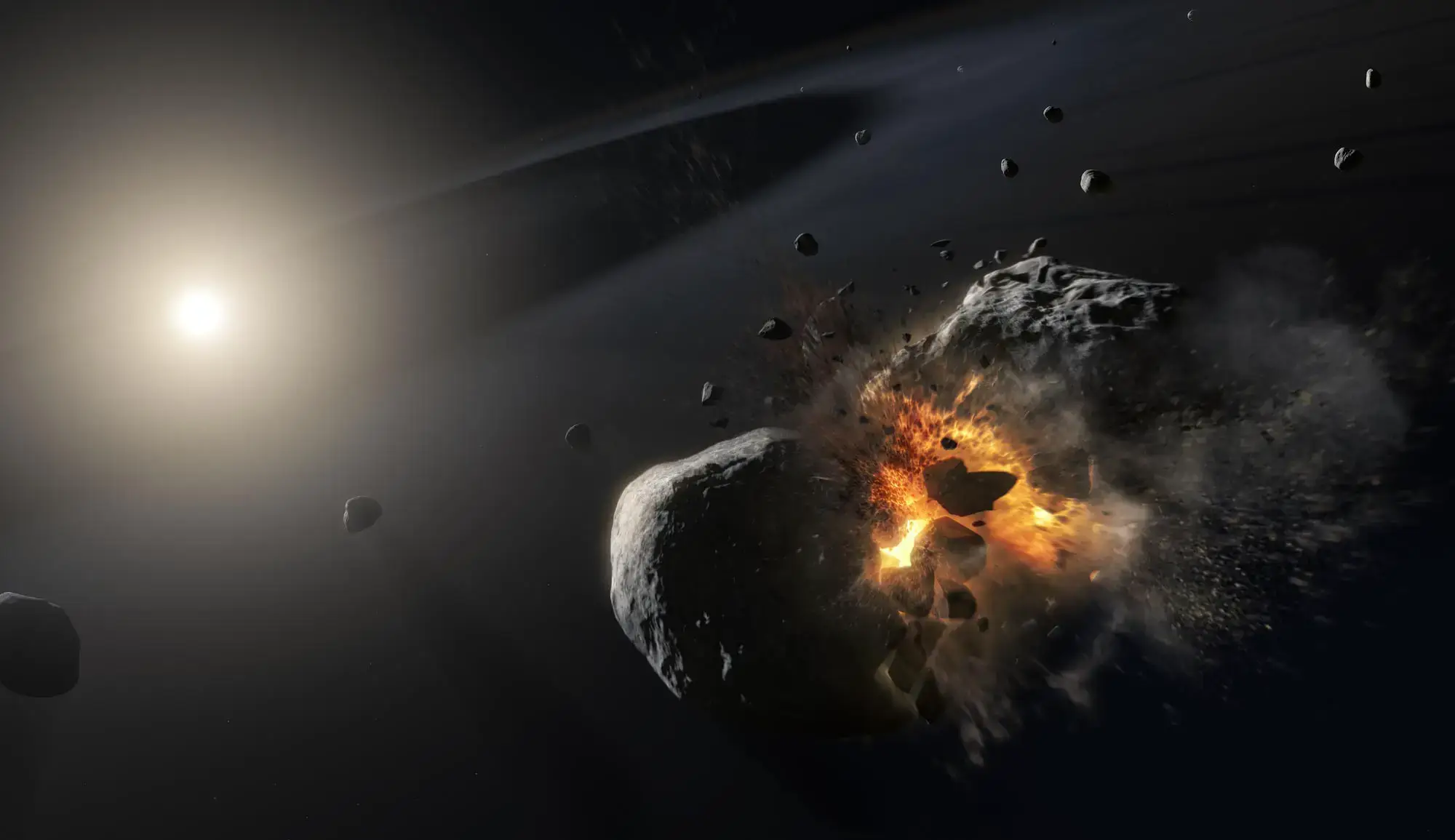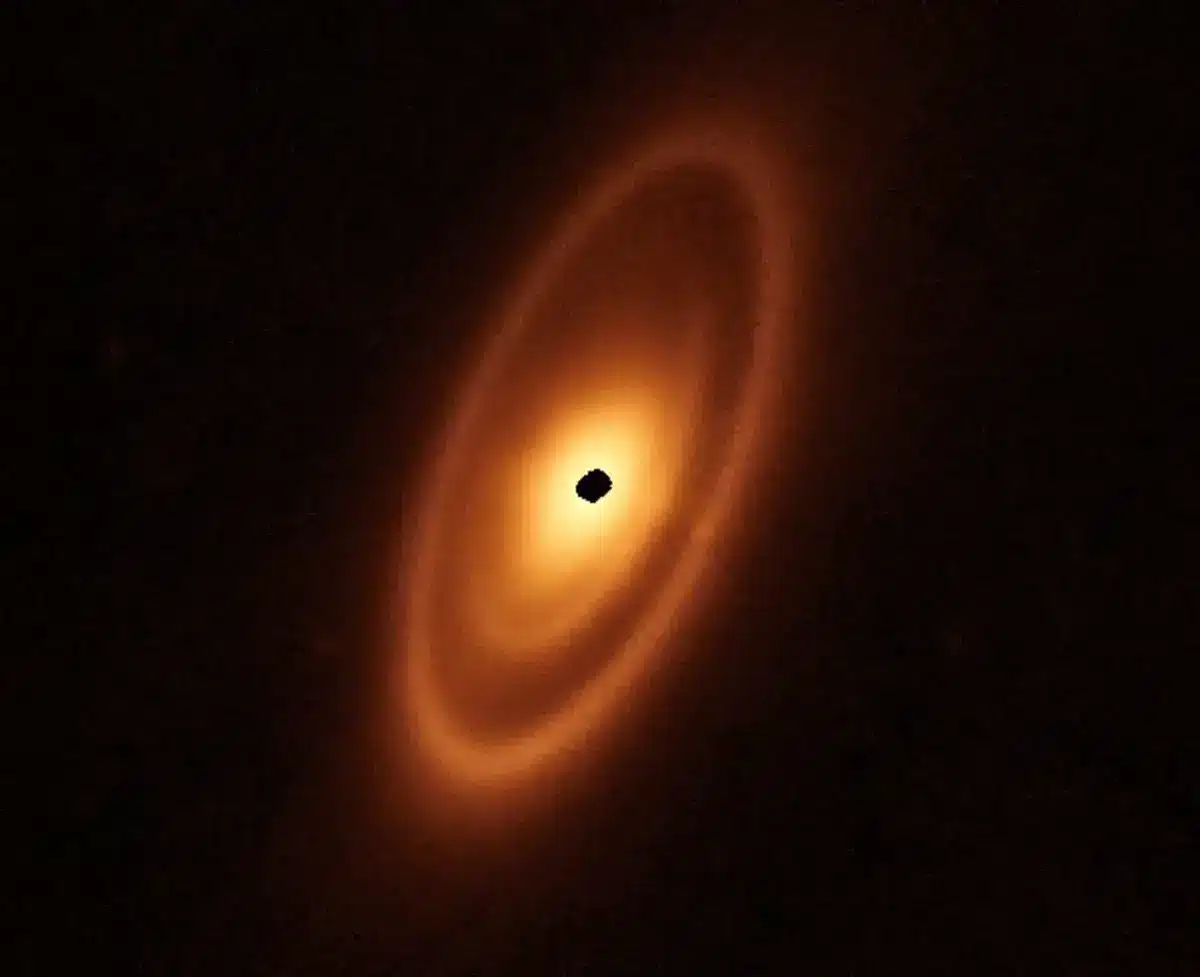The belts surround the hot young star, which can be seen with the unaided eye as the brightest star in the southern group Southern Pisces. The dust belts are fragments from the collisions of larger bodies, corresponding to asteroids and comets, and are often described as "fragment disks"

Astronomers used NASA's James Webb Space Telescope to image the hot dust around a nearby young star, Pommelhot, to study the first asteroid belt ever seen outside our solar system in infrared light. But to your surprise, the dust structures are much more complex than the asteroid belts and the Kuiper dust belt in our solar system. There are a total of three nested belts that extend up to 23 million km from the star - that's 150 times the distance of Earth from the Sun. The size of the extreme belt is about twice the size of the Kuiper belt of small bodies and cold dust in our solar system beyond Neptune. The inner belts - never seen before - were discovered by Webb for the first time.
The belts surround the hot young star, which can be seen with the unaided eye as the brightest star in the southern group Southern Pisces. The dust belts are fragments from the collisions of larger bodies, corresponding to asteroids and comets, and are often described as "fragment disks".
"I would describe Pommelhot as an archetype of debris disks found elsewhere in our galaxy, because it has similar components to those we have in our planetary system," said Andreas Gaspar of the University of Arizona in Tucson and lead author of a new paper describing these results. "By looking at the patterns in these rings, we can start to make a little diagram showing what a planetary system should look like - if we manage to take an image deep enough to see the suspect planets."
The Hubble Space Telescope and the Herschel Space Observatory, as well as LIMA, have previously taken sharp images of the extreme belt. But none of them found any structure inside her. The inner belts were separated for the first time by Webb in Or AA. “The thing where Web really excels is that we can physically separate the thermal glow from the dust in these inner regions. So you can see inner belts that we could never see before," said Schuyler Wolf, another team member at the University of Arizona.
These belts are apparently cut by gravitational forces that form invisible planets. Similarly, within our own solar system Jupiter collects the asteroid belt, the inner rim of the Kuiper belt from Neptune's statue, and the outer rim sharpened by possibly more distant bodies that are still unseen. As Webb images more systems, we will get information about the configurations of their planets.


2 תגובות
I think you have a typographical error in the article.
Write "23 million km from the star".
Isn't it meant to be 23 billion km?.
The daily discoveries in the scientific fields are the best reality so far.
It's a shame they don't adapt the information to children from preschool age and up..
To create curiosity in the children in the fields of science..
The information about World Quantum Day arrived here after the deadline.. Too bad.
Can you post the lectures so we can read?
Link to another option..
Thanks for the knowledge and its management
For bringing the new to our eyes